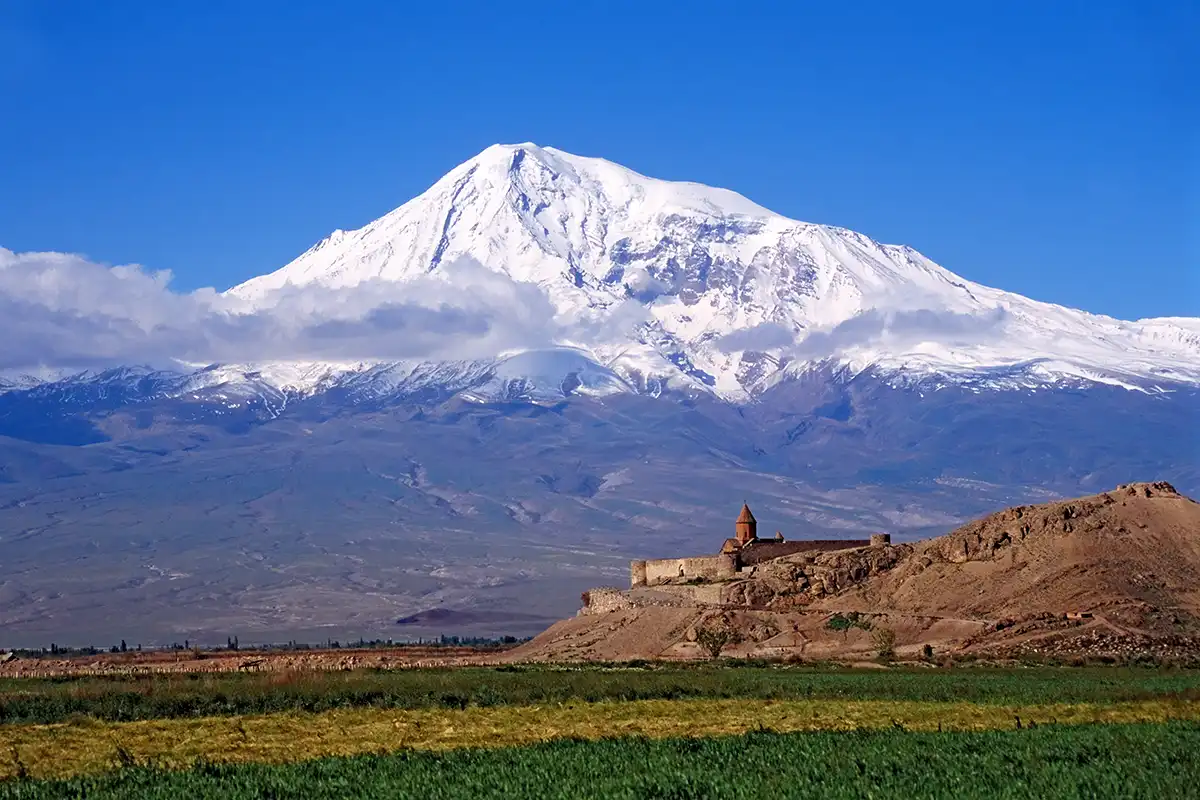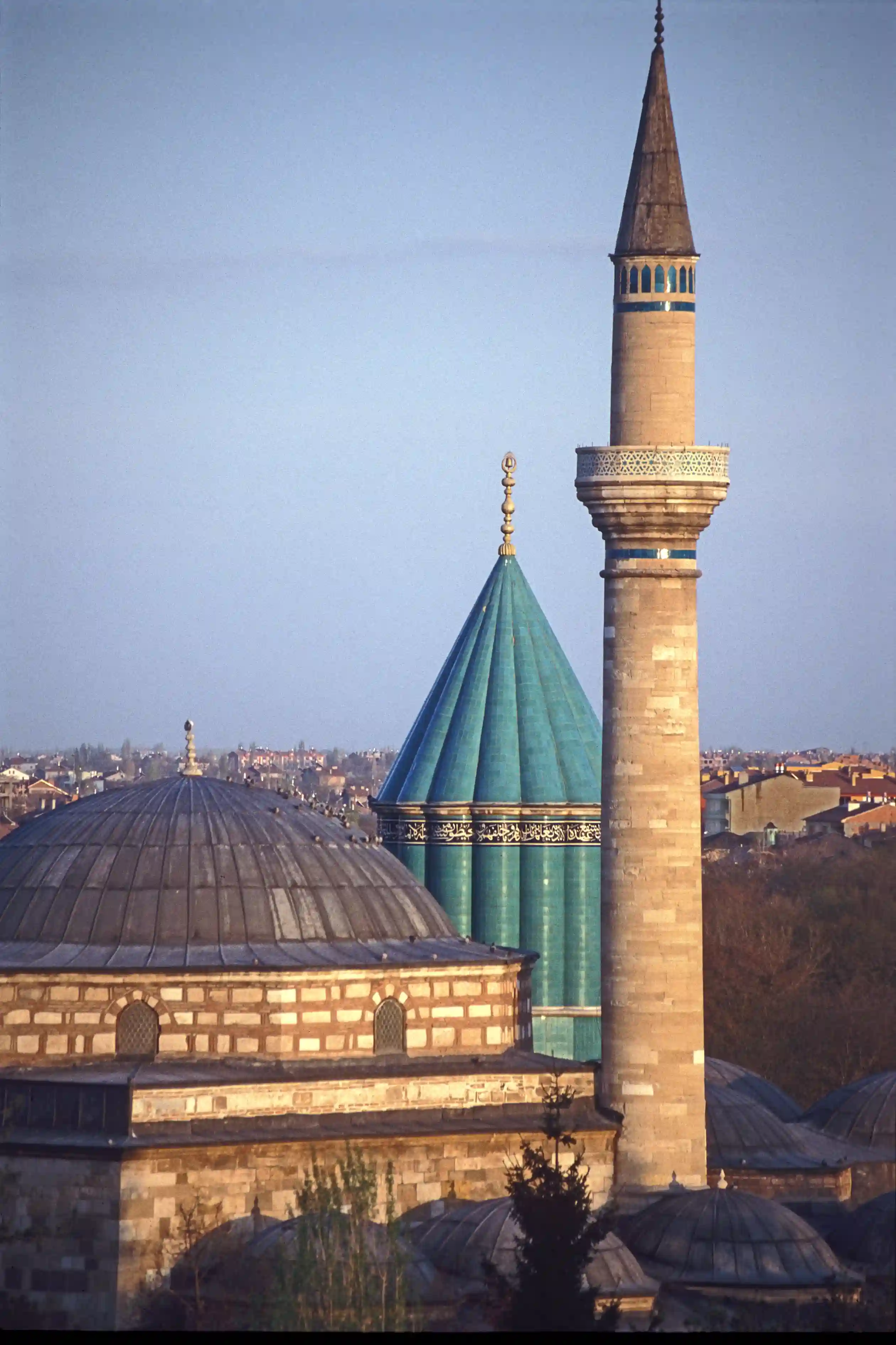Sacred Sites of Turkey
Akdamar Island
Akdamar Island, located in Lake Van, is home to the Armenian Cathedral of the Holy Cross. This 10th-century church is renowned for its intricate stone carvings depicting biblical scenes. The island and its cathedral hold significant religious and cultural importance for Armenian Christians, attracting pilgrims and tourists who admire its historical and artistic value.
Antioch
Antioch, modern-day Antakya, is a city of immense historical and religious significance. It was an early center of Christianity, where the followers of Jesus were first called Christians. The Church of St. Pierre, believed to be one of the oldest Christian churches, is a major pilgrimage site.
Aphrodisias
Aphrodisias, an ancient city dedicated to Aphrodite, the goddess of love, is known for its well-preserved ruins. While primarily an archaeological site, its association with ancient religious practices and its impressive Temple of Aphrodite make it a place of historical and cultural interest. The city's artistic and architectural achievements reflect the religious beliefs and practices of the ancient world.
Balıklıgöl - Pool of Abraham, Halil-Ür Rahman Lake, Sanliurfa
Balıklıgöl, also known as the Pool of Abraham, is a sacred site in Sanliurfa. According to Islamic tradition, this is where Prophet Abraham was thrown into a fire by King Nimrod, but the fire miraculously turned into water, and the logs into fish. The site, with its serene pool and surrounding mosques, is a major pilgrimage destination for Muslims, attracting visitors who seek blessings and historical connection.
Belevi Mausoleum
The Belevi Mausoleum is a monumental tomb located near Ephesus. While its exact purpose and the person it was built for are debated, its impressive size and architectural style suggest it was a significant burial site. The mausoleum's historical and archaeological value makes it a point of interest for those studying ancient Anatolian funerary practices.
Boncuklu Tarla
Boncuklu Tarla is an important Neolithic archaeological site in southeastern Turkey. It predates Göbekli Tepe and provides valuable insights into the early stages of human settlement and ritual practices. The site's discoveries contribute to our understanding of the transition from hunter-gatherer societies to settled agricultural communities and the development of early religious beliefs.
Bursa
Bursa, the first capital of the Ottoman Empire, is a city rich in Islamic heritage. The Grand Mosque (Ulu Cami) and the Green Mosque (Yeşil Cami) are significant religious landmarks, showcasing Ottoman architecture and Islamic art. Bursa's historical mosques, tombs, and religious schools make it a destination for those interested in Islamic history and culture.
Church of St. Anthony of Padua, Istanbul
The Church of St. Anthony of Padua in Istanbul is a significant Catholic church and a place of worship for the city's Catholic community. Its neo-Gothic architecture and its role as a spiritual center make it a notable landmark. The church's historical and religious importance attracts both local worshippers and visitors from around the world.
Church of St. Mary of Blachernae (Ayın Biri Kilisesi), Istanbul
The Church of St. Mary of Blachernae, also known as Ayın Biri Kilisesi, is a historic Orthodox church in Istanbul. It was an important religious site during the Byzantine era and is known for its association with the Theotokos. The church's historical significance and its connection to Byzantine religious traditions make it a point of interest for those studying Christian history.
Church of St. Pierre, Antakya
The Church of St. Pierre in Antakya is believed to be one of the oldest Christian churches in the world. It is a cave church where early Christians gathered for worship. The church's historical significance and its association with the early Christian community make it a major pilgrimage site for Christians.
Darende
Darende is a town known for the Somuncu Baba Tomb and Mosque Complex. Somuncu Baba was a revered Sufi saint, and his tomb is a significant pilgrimage site for Muslims.
Didyma
Didyma is an ancient sanctuary known for its impressive Temple of Apollo. The temple, one of the largest in the ancient world, was a major religious center. While primarily an archaeological site, its association with ancient Greek religious practices makes it a place of historical and cultural interest.
Duzgun Baba
Duzgun Baba is a sacred mountain and pilgrimage site for Alevi Muslims. It is believed to be the burial place of Duzgun Baba, a revered Alevi saint.
Ephesus
Ephesus is an ancient city with significant religious and historical importance. It is home to the House of the Virgin Mary, believed to be where Mary, the mother of Jesus, spent her last days. The city's ancient ruins, including the Library of Celsus and the Great Theatre, attract visitors from around the world. Ephesus's blend of religious and historical significance makes it a major pilgrimage and tourist destination.
Eski Gumus Monastery, Nigde
The Eski Gumus Monastery near Nigde is a rock-cut monastery known for its well-preserved frescoes. The monastery's ancient architecture and its artistic treasures make it a significant site for those interested in Byzantine art and monastic history. Its remote location and the peaceful atmosphere contribute to its spiritual appeal.
Eyup Sultan Mosque, Istanbul
The Eyup Sultan Mosque in Istanbul is one of the most sacred Islamic sites in the city. It houses the tomb of Eyüp el-Ensari, a companion of the Prophet Muhammad.
Göbekli Tepe
Göbekli Tepe is an ancient archaeological site that predates Stonehenge. It is considered one of the oldest known temples in the world. The site's intricate T-shaped pillars and animal carvings suggest it was a center for ritual practices. Göbekli Tepe's discovery has revolutionized our understanding of early human societies and the development of religious beliefs.
Harbiye Falls, Antakya
Harbiye Falls, near Antakya, is a natural beauty spot with historical and mythological associations. In ancient times, it was known as Daphne and was associated with the myth of Daphne and Apollo.
Joshua’s Hill, Istanbul
Joshua’s Hill, also known as Yoros Hill, is a site with historical and religious significance. It is believed to be associated with the biblical figure Joshua. The hill's strategic location and its historical fortifications make it a point of interest for those studying the region's history.
Konya
Konya is a city known for its association with the Sufi mystic Mevlana Jalaluddin Rumi. The Mevlana Museum, which houses Rumi's tomb, is a major pilgrimage site for Sufi Muslims. The city's rich Islamic heritage and its role as a center of Sufi thought make it a vital destination for spiritual and cultural exploration.
Letoon, Kumluova
Letoon, near Kumluova, is an ancient sanctuary dedicated to Leto, the mother of Apollo and Artemis. The site's well-preserved ruins, including the Temple of Leto, make it a significant archaeological and historical landmark. Its association with ancient Greek religious practices makes it a place of cultural interest.
Midas Monument, Yazilikaya
The Midas Monument, located in Yazilikaya, is a Phrygian rock-cut monument with inscriptions. It is believed to be associated with King Midas and reflects the religious and cultural practices of the Phrygian civilization. The monument's historical and archaeological value makes it a point of interest for those studying ancient Anatolian history.
Monastery of Saint George, Büyükada Island, Istanbul
The Monastery of Saint George on Büyükada Island is a Greek Orthodox monastery and a pilgrimage site. It is known for its miraculous icon of Saint George.
Monastery of St. Simeon the Younger, Samandagi
The Monastery of St. Simeon the Younger, near Samandagi, is an ancient monastery known for its historical significance and its association with Saint Simeon the Younger. The monastery's ruins and its historical context make it a point of interest for those studying early Christian monasticism.
Mor Gabriel Monastery, Midyat-Mardan
Mor Gabriel Monastery, near Midyat, is one of the oldest Syriac Orthodox monasteries in the world. It is a significant religious and cultural center for the Syriac Christian community. The monastery has been a place of continuous prayer and worship since its founding in the 4th century. Its architectural features, including ancient mosaics and stone carvings, reflect its long history and artistic heritage. The monastery serves as a vital hub for preserving Syriac Christian traditions, language, and culture.
Mor Hananyo Monastery (Deyrulzaffaran), Mardin
Mor Hananyo Monastery, also known as Deyrulzaffaran, near Mardin, is another important Syriac Orthodox monastery. It has served as the seat of the Syriac Orthodox Patriarch for centuries. The monastery's historical architecture, religious artifacts, and its role as a center of Syriac Christian culture make it a vital destination for religious and cultural exploration.
Moses Tree, Musa Agaci, Antakya
The Moses Tree (Musa Ağacı) in Antakya is a large, ancient plane tree that holds religious significance for various faiths. It is believed to be associated with the prophet Moses.
Mount Judi
Mount Judi is traditionally believed to be the landing place of Noah's Ark after the biblical flood. It is a site of religious significance for Muslims, Christians, and Jews. The mountain's historical and religious associations make it a point of interest for those studying biblical history.
Mount Kel Dağı
Mount Kel Dağı, also known as Mount Casius, is a mountain with historical and religious significance. It was considered a sacred mountain in ancient times and was associated with various deities.
Mt. Ararat
Mount Ararat is a mountain of profound religious significance, believed by many to be the final resting place of Noah's Ark. It is a symbol of faith and hope for Christians, Muslims, and Jews. The mountain's majestic presence and its biblical associations make it a destination for pilgrims and explorers.
Mt. Ida
Mount Ida, also known as Kazdağı, is a mountain range with mythological and historical significance. It was a sacred mountain in ancient Greek mythology and was associated with various deities. The mountain's natural beauty and its mythological associations make it a point of interest for those interested in ancient Greek culture.
Nemrut Dagi
Nemrut Dağı is a mountain known for its monumental tomb and sanctuary built by King Antiochus I of Commagene. The site's colossal statues and its historical significance make it a UNESCO World Heritage site and a major tourist attraction. The blend of religious and historical elements makes Nemrut Dağı a fascinating destination.
Olympus ruins, Antalya province
The Olympus ruins, located in the Antalya province, are the remains of an ancient city associated with Mount Olympus. The site's historical significance and its association with ancient Greek mythology make it a point of interest for those studying ancient history and culture.
Panagia Blaherna Ayazması, Istanbul
Panagia Blaherna Ayazması is a holy spring located in Istanbul, associated with the Church of St. Mary of Blachernae. It is a place of pilgrimage for Orthodox Christians, who believe its waters have healing powers. The spring's religious significance and its historical associations make it a point of interest for those studying Byzantine religious traditions.
Sanliurfa
Sanliurfa is a city with significant religious importance for Muslims, Christians, and Jews. It is known as the city of prophets, with sites such as Balıklıgöl and the Cave of Abraham.
Shrine of Abdurrahman Gazi Mezarlığı, Erzurum
The Shrine of Abdurrahman Gazi Mezarlığı in Erzurum is a revered Islamic pilgrimage site. Abdurrahman Gazi was a companion of the Prophet Muhammad, and his tomb is a place of prayer and remembrance.
Shrine of Haji Bektash Veli, Hacibektas
The Shrine of Haji Bektash Veli in Hacibektas is the central pilgrimage site for Alevi Muslims. Haji Bektash Veli was a revered Sufi saint and the founder of the Bektashi order.
Shrine of Hazrat Shemsuddin of Tabriz, Konya
The Shrine of Hazrat Shemsuddin of Tabriz in Konya is a significant Islamic pilgrimage site. Shemsuddin of Tabriz was the spiritual mentor of Mevlana Jalaluddin Rumi.
Sümela Monastery
Sümela Monastery, located in the Pontic Mountains near Trabzon, is a Greek Orthodox monastery built into a cliff face. Its stunning location and its historical significance make it a major tourist attraction. The monastery's ancient architecture and its religious artifacts make it a point of interest for those studying Byzantine history and culture.
Surb Karapet Monastery
Surb Karapet Monastery, also known as the Monastery of St. John the Baptist, was a significant Armenian Apostolic monastery. Though largely in ruins, it remains a site of historical and religious importance for Armenian Christians.
Telli Baba, Istanbul
Telli Baba is a shrine located in Istanbul that is visited by many people seeking blessings and fulfillment of wishes. It is associated with various legends and is considered a place of spiritual significance.
Temple of Athena, Assos
The Temple of Athena in Assos is an ancient Greek temple located on a hilltop overlooking the Aegean Sea. The temple's ruins and its scenic location make it a significant archaeological and historical landmark. Its association with the goddess Athena makes it a point of interest for those studying ancient Greek religious practices.
Tlos
Tlos is an ancient Lycian city with well-preserved ruins, including a fortress, a theater, and tombs. The site's historical significance and its blend of Lycian, Roman, and Ottoman influences make it a point of interest for those studying ancient Anatolian history.
Veysel Karani Türbesi
The Veysel Karani Türbesi is a shrine dedicated to Veysel Karani, a revered figure in Islamic tradition. His tomb is a place of pilgrimage and prayer for Muslims, attracting visitors who seek spiritual connection and blessings.
Virgin Mary Pool, Meryem Ana Havuzu, Arsuz
The Virgin Mary Pool, also known as Meryem Ana Havuzu, in Arsuz, is a natural spring believed to have healing powers. It is associated with the Virgin Mary and is visited by Christians who seek blessings and healing.
Xanthos
Xanthos is an ancient Lycian city and a UNESCO World Heritage site known for its well-preserved ruins, including tombs, monuments, and a theater. The site's historical significance and its artistic achievements make it a point of interest for those studying ancient Lycian history and culture.
Yazilikaya
Yazilikaya is a Phrygian rock sanctuary known for its rock-cut reliefs depicting Phrygian deities. The site's historical significance and its artistic treasures make it a point of interest for those studying ancient Anatolian religious practices.

Martin Gray is a cultural anthropologist, writer and photographer specializing in the study of pilgrimage traditions and sacred sites around the world. During a 40 year period he has visited more than 2000 pilgrimage places in 160 countries. The World Pilgrimage Guide at sacredsites.com is the most comprehensive source of information on this subject.


